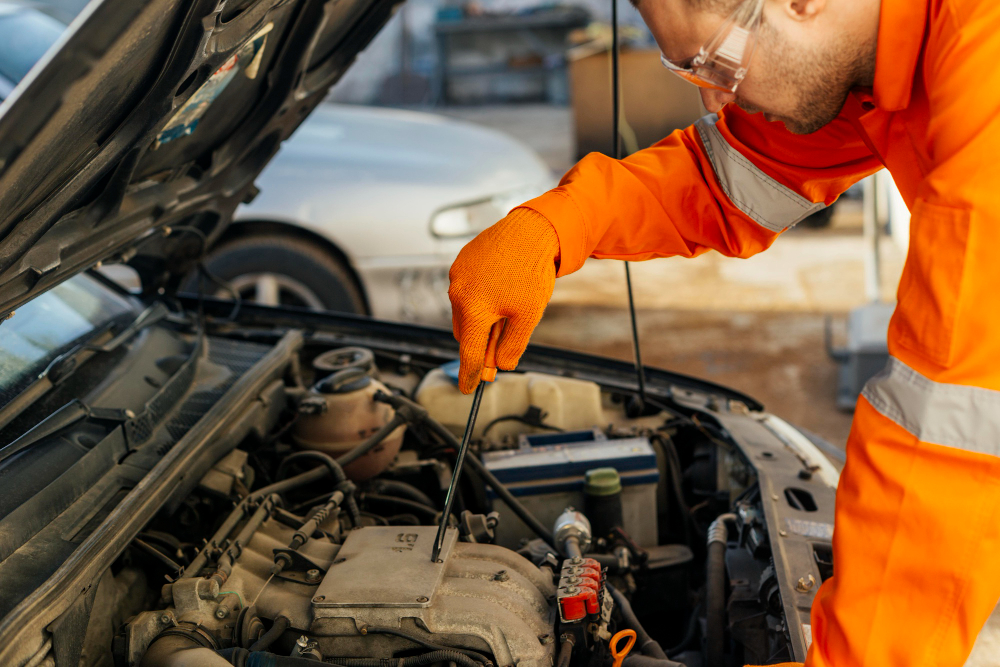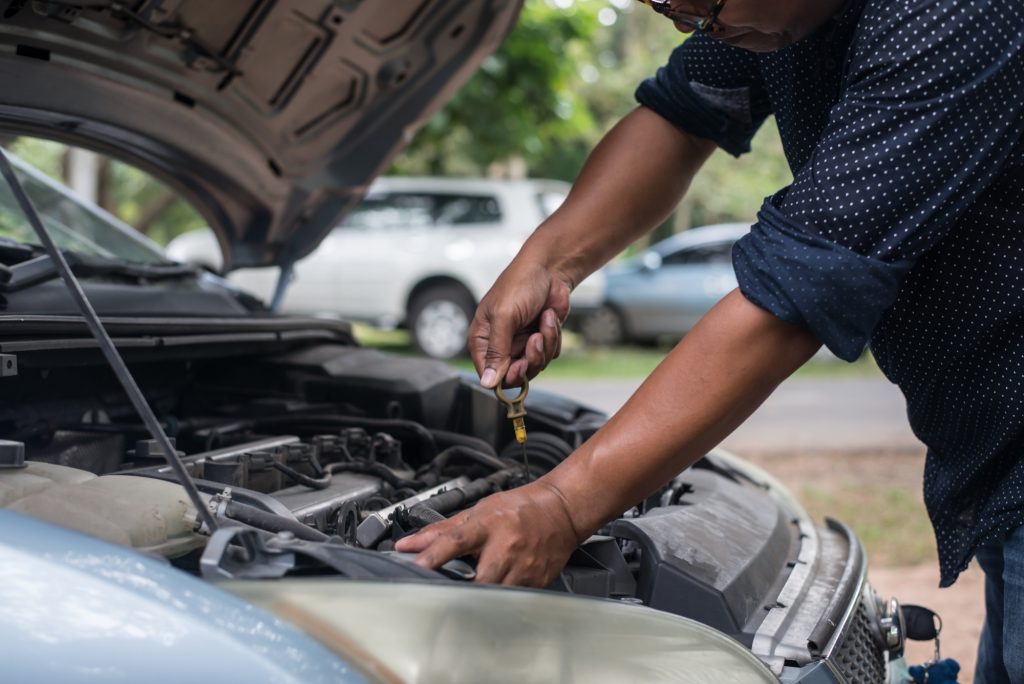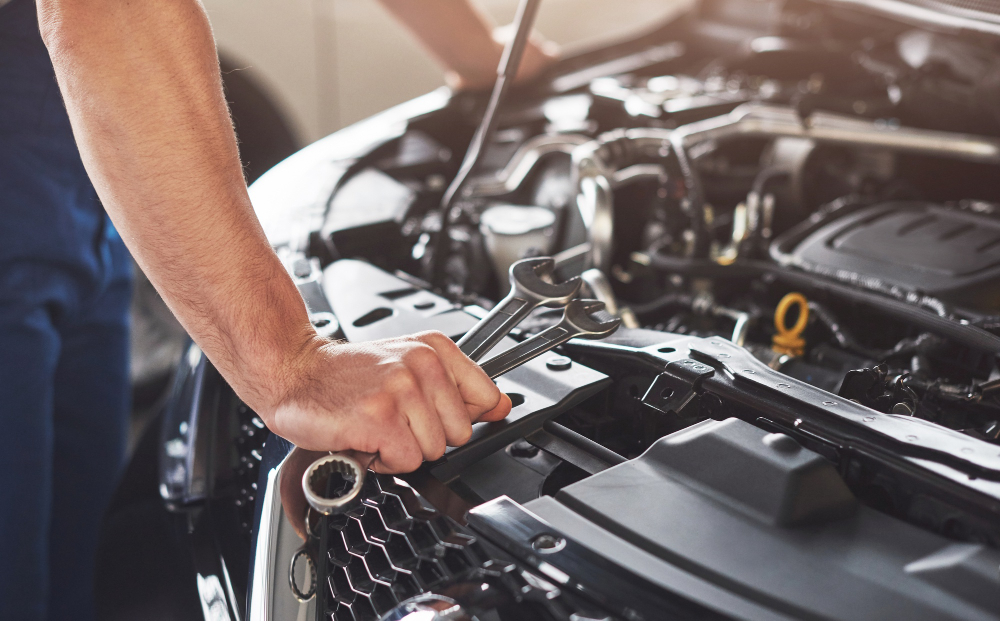Your car won’t start because your starter battery is dead? We’ll give you some tips and guides so that you can quickly fix this problem and get back on the road in no time. We’ll also explain what causes a dead car battery and how you can fix it.
Car battery empty – signs and causes
You can easily tell that your car battery is empty. A flat starter battery is usually noticeable when you start the engine. If you turn the ignition key and can only hear weak or no noise from your starter, this could be an indication of a flat battery. However, similar symptoms can also be caused by a defective starter, a broken ignition lock, or damaged cable connections.
If your starter battery is very deeply discharged, other electrical systems, from the interior lighting to the electronic central locking, may also fail. The cause of the unwanted discharge of your vehicle battery is leakage currents from defective cables or electrical systems that continued to run when the engine was switched off, such as the vehicle headlights.
In addition, the starter battery itself may be defective or it may not be sufficiently charged due to an alternator or cable defect. It should also be mentioned that these problems occur more frequently in the cold autumn and winter months because the low temperatures place additional strain on your starter battery.
The main causes of a weak battery
A weak battery can cause unexpected breakdowns and often results in unwanted towing costs or at least delays. To avoid such problems, we advise to pay attention to the most common causes of a dead car battery, such as:
- Short-distance trips
- Light left on
- Poor care and dirty contacts
- Low temperatures
- Defective lighting system
- Short circuit in the electronics
- Error in the control unit
Short-distance trips
Short journeys put a strain on the car battery because the engine often does not run long enough to fully recharge it. Frequent short journeys lead to discharge, which also affects the lifespan of the battery in the long term.
Left on light
If the light is accidentally left on, the car battery will discharge quickly, especially if it is left standing for a long time. A deeply discharged battery makes starting more difficult and can also significantly reduce the lifespan.
Inadequate care and dirty contacts
Poor maintenance and dirty battery contacts impair current transfer, which can reduce battery performance. Corroded or loose connections, in turn, lead to discharge and starting problems, significantly reducing battery longevity.
Cold and low temperatures
Low temperatures put a lot of strain on the car battery because chemical reactions are slowed down and you need more energy to start the car. How long can a car be left standing in the winter before the battery is empty? The battery often discharges after just two to three weeks of not being used.
Malfunction of the lighting system
A faulty lighting system can put excessive strain on the car battery, as faulty components often draw power unnoticed. This leads to a slow discharge, which causes the battery to run down more quickly, affecting the car’s ability to start.
Short circuit in the vehicle electronics
A short circuit in the electronics can draw power unnoticed and drain the car battery, even when the car is turned off. This leads to rapid discharge and increases the risk of starting problems and battery failure.
Defect in the control unit
A fault in the control unit can cause the vehicle to consume unnecessary power, which drains the battery. This continuous energy consumption reduces the battery capacity and also shortens its lifespan.
Car battery empty: what to do?
If your car battery is dead, there are several ways to get the vehicle started again. One option is to get a jump start from a donor car or power bank. Alternatively, you can push the vehicle to start it. Another option is to charge the battery with a charger. However, in some cases, you will need to replace the battery if it is deeply discharged or even defective.
There are various ways to test your car battery. If you have a modern charger to hand, you can usually use it to detect a battery defect. First of all, you should fully charge your empty starter battery. If your vehicle still won’t start, there is another cause (ignition lock, cable, or starter) or your battery is so badly damaged that you must replace it.
Another option is to determine the voltage reached by the starter battery using a simple multimeter. To do this, however, you first need to get your car running. We will explain how this can be done with the help of a jump start in the next section. Then drive your car a few kilometers or let it idle for about 30 minutes to charge the battery. Then let your car stand for a few hours and then measure the battery voltage.
This should be in the range of 12.4 to 12.7 V. If this is not the case, then either your battery is weak (due to age or incorrect charging voltage), there is a consumer that is drawing power, or leakage current in your on-board network is to blame for the discharge.
Car battery discharges while standing
Leakage currents are a common cause of a car battery discharging when not in use. Dirt or moisture on the battery terminals can cause a slight current to flow between the terminals. Even if this current is minimal, over time this will lead to a complete discharge of the battery, especially if the vehicle is not in use for long periods.
New car battery empty after 2 days
A battery can discharge quickly if there is a problem with the electronics. Causes such as leakage currents, defective lighting systems or a faulty alternator can also discharge the new car battery overnight. In this case, the battery can be completely discharged even though it is still new. In such a case, it is recommended to visit a specialist auto repair shop urgently.
How to jump start a vehicle with a dead battery
First of all, you need the right equipment; that is, suitable jumper cables and a vehicle whose alternator has sufficient power to supply your vehicle with the power it needs. The rule of thumb is that larger/more powerful engines or diesel engines are equipped with alternators with a higher rated power.
First, start the engine of the vehicle supplying the power. Then connect the two positive poles of the battery to each other using the red starter cable (it’s best to connect the cable to the receiver battery first). Connect one end of the other cable (usually black) to a ground point on your engine or car body on the vehicle receiving the power. This should be as far away from the battery as possible to avoid oxyhydrogen explosions.
In the next step, connect the other end of the black starter cable to the negative pole of the power donor battery. Now wait a moment so that the receiver battery can charge a little. Then try to start your engine. If this doesn’t work within 10 seconds, you should wait a little longer.
Once your vehicle is running, disconnect all connections in the opposite order. Drive your car for around 30 minutes, preferably across the country, to prepare your battery for the next engine start.
Can You drive with a dead car battery?
If you can start your engine (for example by jump-starting it, as explained above), it is not a problem to drive with a flat battery. On the contrary: This way you can ensure that your alternator can recharge the empty starter battery. How long you have to drive depends on the distance you have traveled, the alternator’s output, and the capacity of your battery.
As a rule, however, a 30-minute drive should be enough to charge a completely empty starter battery to the point where you can start your engine again without jump-starting it.
How long does it take to charge a dead starter battery?
Again, this depends on the battery capacity, but also on your charger. However, modern chargers are able to automatically switch to a trickle charge as soon as the vehicle battery is fully charged. This prevents overloading.
Where can you dispose of your old starter battery?
If you buy a new battery, you have to spend some money. You will get this amount back if you dispose of your old, completely empty starter battery correctly. You can hand it in anywhere that sells new batteries, but your local recycling center will also accept them. Please note that the relevant proof of purchase may be required to pay out the deposit.
How to choose a new car battery?
When changing your car battery, it is important to always choose the same type of battery to avoid damage. Make sure that the new battery has similar performance parameters to the one previously used, e.g. in terms of capacity, voltage, and cold start current.



